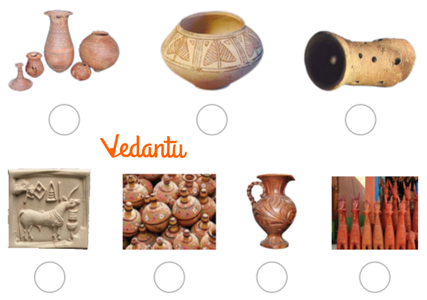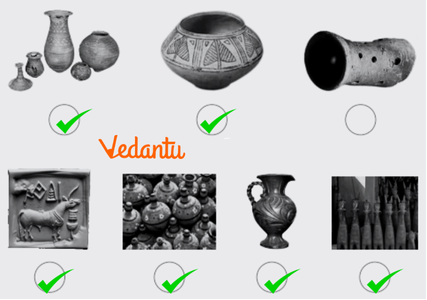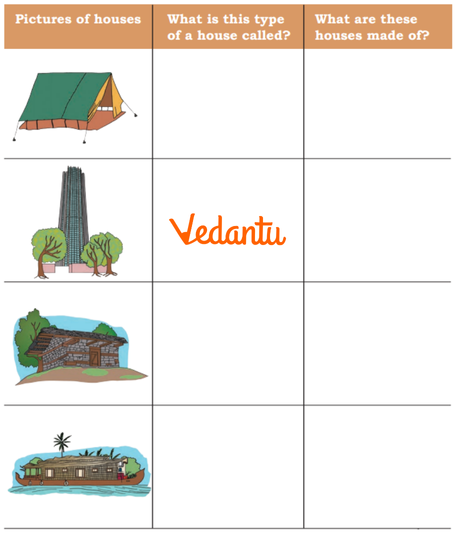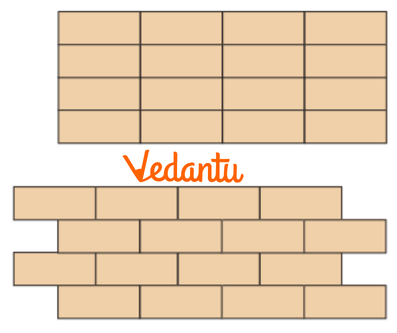Evs Class 3 Chapter 11 Questions and Answers - Free PDF Download
FAQs on NCERT Solutions For Class 3 Evs Chapter 11 Making Things - 2025-26
1. What are the NCERT solutions for Class 3 EVS Chapter 11: Making Things?
NCERT Solutions for Class 3 EVS Chapter 11: Making Things provide step-by-step answers to all the textbook questions, activities, and exercises as per CBSE guidelines 2025–26. These solutions explain how common items like pots and toys are made from materials such as clay, wood, and paper, helping students understand the chapter thoroughly.
2. How does the Class 3 EVS Chapter 11 solution help students learn about the process of making things?
The Class 3 EVS Chapter 11 solutions teach students the exact steps involved in turning raw materials like clay or wood into useful objects. This stepwise approach follows the CBSE method, ensuring easy understanding of every process and encouraging children to observe and try making items themselves.
3. Which materials are commonly discussed in the NCERT Solutions for Class 3 EVS Chapter 11?
Chapter 11 includes questions and answers regarding clay, wood, metal, and paper, showing how each is used to create household and craft items. These solutions teach students why particular materials are chosen for making different objects, based on their properties.
4. Why is clay baked in a kiln according to the NCERT solutions for Class 3 EVS?
Clay pots are baked in a kiln to make them strong and durable. The NCERT solution for this question explains that firing clay at high temperatures hardens it, so the pot can hold water or other items without breaking easily.
5. How do the NCERT solutions for Chapter 11 promote creativity and observation skills in students?
The NCERT Solutions for Class 3 EVS Chapter 11 encourage students to observe patterns in nature, try activities like pot-making, and identify materials around them. By including drawing, arranging, and observation tasks, these solutions nurture creativity and critical thinking.
6. What are the main steps described in NCERT Solutions for making a pot in Class 3 EVS Chapter 11?
- Collecting and preparing clay
- Shaping the clay on a wheel
- Drying the shaped pot
- Baking the pot in a kiln
7. According to the NCERT solutions, why are mud houses considered better for the environment?
Mud houses are better for the environment because mud is a natural, easily available, and biodegradable material. Such houses remain cool in summer and warm in winter, needing less energy for temperature regulation and causing minimal environmental pollution.
8. How do the NCERT solutions explain the importance of safety rules when making things or at construction sites?
The NCERT solutions highlight that following safety rules, like wearing helmets at construction sites and using materials carefully, helps prevent injuries. Students learn why safety is essential whenever people make or build things, especially in practical activities.
9. What role does creativity play in making things as explained in the NCERT Solutions for Class 3 EVS Chapter 11?
Creativity helps people invent new designs, use available materials efficiently, and solve problems during the making process. The solutions encourage students to use their imagination, recognize patterns, and decorate items uniquely.
10. How do the NCERT solutions support exam preparation for Class 3 EVS Chapter 11?
NCERT Solutions for Class 3 EVS Chapter 11 cover every key point and question from the textbook, using CBSE-approved answers. The clear format and accurate explanations help students revise efficiently before exams.
11. What can students learn from observing a potter, as suggested in the NCERT solutions?
Observing a potter teaches students about traditional tools, stepwise creation, and the skill required to shape clay objects. The solution suggests that watching such processes deepens understanding of the chapter’s concepts and real-world application.
12. In what ways do the NCERT solutions explain the use of different materials for building houses?
The solutions describe that houses are built using materials such as bricks, mud, cement, wood, and glass, chosen based on their strength, availability, and suitability to the local climate. This explains why houses look different in different places and why material choice matters.
13. FUQ: What misconceptions might students have about the process of making things, and how do the NCERT solutions address these?
Students may think that making items like pots or houses is simple and quick. The NCERT solutions clarify each stage—material collection, shaping, and finishing—demonstrating that making things involves planning, patience, and multiple steps to ensure durability and usefulness.
14. FUQ: How can learning from NCERT solutions for Class 3 EVS Chapter 11 be applied to daily life?
By following the solutions, students appreciate everyday items, attempt simple crafts at home, and become more aware of recycling and resource use. This knowledge fosters responsibility, creativity, and practical problem-solving beyond the classroom.





































